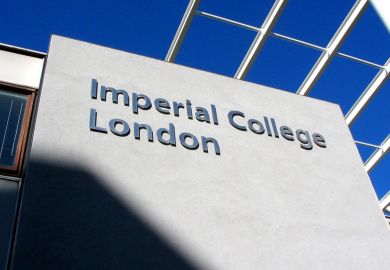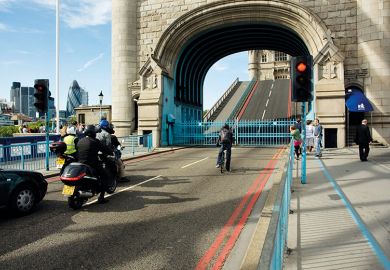I don’t usually read The Daily Telegraph, but I couldn’t overlook its campaign headline last month to “Save David Willetts!” (“Telegraph View”, 17 July). Why did Willetts, the universities and science minister, need to be saved? Because he is “older, balder and more nakedly intellectual than is currently fashionable” – to be a government minister, that is. Now, that’s an interesting series of implied prerequisites for ministerial office. Perhaps it explains why Michael Gove, the education secretary, isn’t a likely candidate for a shuffle-out in the near future.
“Telegraph View” went on to explain that Willetts had embedded principles of “choice, independence and competition” within higher education. And the following week, Willetts’ own piece, entitled “Our privately funded university revolution”, duly appeared in the Telegraph’s pages (24 July).
Willetts’ self-promotional article is excellent as a statement of one aspect of higher education reform since 2010: the opening up of the sector to “alternative providers”. And no more so than in Central London, where three new private universities and one new university college have gained government approval this year, and are keenly carving out their “different, more flexible” futures. As Willetts rightly says, “the genie is already out of the bottle”.
We are busily recreating a two-tier system that is defining itself more rapidly than expected - and in which new ‘alternative providers’ will initially be red herrings
His claimed “revolution” is in the “radical process of supply-side reform”. But the concluding claim of “a genuinely open system that encourages real student choice” is not yet justified, and his article does not address the continuing mess surrounding international student and immigration policy and practice (despite the fact that so many of the students going to “alternative providers” are internationals).
Clearing in 2013 has shown that the mechanisms intended to widen student choice have worked more effectively for those aspiring to the “top end” of the sector than for those further down, where any extra places were allocated to those institutions offering more affordable fees. Although, eventually, further liberalisation at both ends should cause these two initiatives to meet (hence the plight of the “squeezed middle”) – thereby creating Willetts’ “genuinely open system” – we are nowhere near that yet.
In fact, as commonly claimed in the press, we are busily recreating a two-tier system that is defining itself more rapidly than expected – and in which new “alternative providers” will initially be red herrings.
Fortunately for Willetts, in the same week that the Telegraph was trying to save him, 40 of his Tory colleagues in marginal electorates were trying to save themselves on 15 July by publishing their policy ideas for the future: Forty from the forty. The 40th bright idea from the 40 was a new student immigration policy, under the popular catch-cry of “best and brightest”. Well, actually now upgraded to “very brightest and best”.
The 40 Tories accept that students are “the largest and fastest-growing category of immigrants”. They accept that “immigration levels remain too high”. And they accept that international student numbers have to be brought down.
How? Enrolment of non-EU students should be capped, except in 20 to 30 of the top universities.
Why would you want to do this? Well, the 40 are very clear: to send messages. First, to the rest of the world that the UK is open to only “the best students”. Second, to “the best universities” that they will have no restrictions on international student admissions because of their high standards. And third, to the other institutions that courses of “limited academic value” and “purely money-making exercises offering no real benefit to students or to our academic sector” will not be supported. Well, not by international students, at any rate.
Which institutions will be capped? The 40 name the Times Higher Education World University Rankings and the Shanghai Jiao Tong Rankings (which are highly research-influenced) as suitable league tables for determining which are the top universities. So, let’s have a look.
Considering only UK universities, the institutions placed 20th to 29th in the 2013 Shanghai Jiao Tong Rankings are: Newcastle; Queen Mary, University of London; Dundee; Aberdeen; Durham; East Anglia; Exeter; Leicester; St Andrews; and York.
In an equivalent section of THE’s list, questions would be raised for Leeds, Lancaster, Birmingham, Liverpool and Reading too. So all, or some, of these might be capped, along with all lower-ranked institutions.
The 40 and Willetts, then, are at one in embracing choice at the “top end”. Below that, the opportunities for and mechanisms supporting choice are more confused. Indeed, the 40’s proposal for international students moves directly back to the capping that Willetts is sensibly trying to break down for domestic students.
In April, Bahram Bekhradnia of the Higher Education Policy Institute put his finger very precisely on three “false premises” to UK higher education. All of them are represented in the 40th proposal. “One is that research is the most important aspect of higher education. The second is that you judge a system by its elite universities…The third is that because overseas students choose to come here, that proves we are the best – that’s not the case.”
So far, Willetts’ revolution has worked out better at the glittering rather than the grimy end of higher education’s spectrum. Much work still needs to be done to ensure that mass higher (and further) education can satisfactorily evolve – or revolve – in coming years, without unwitting loss of capacity or reputational damage.




